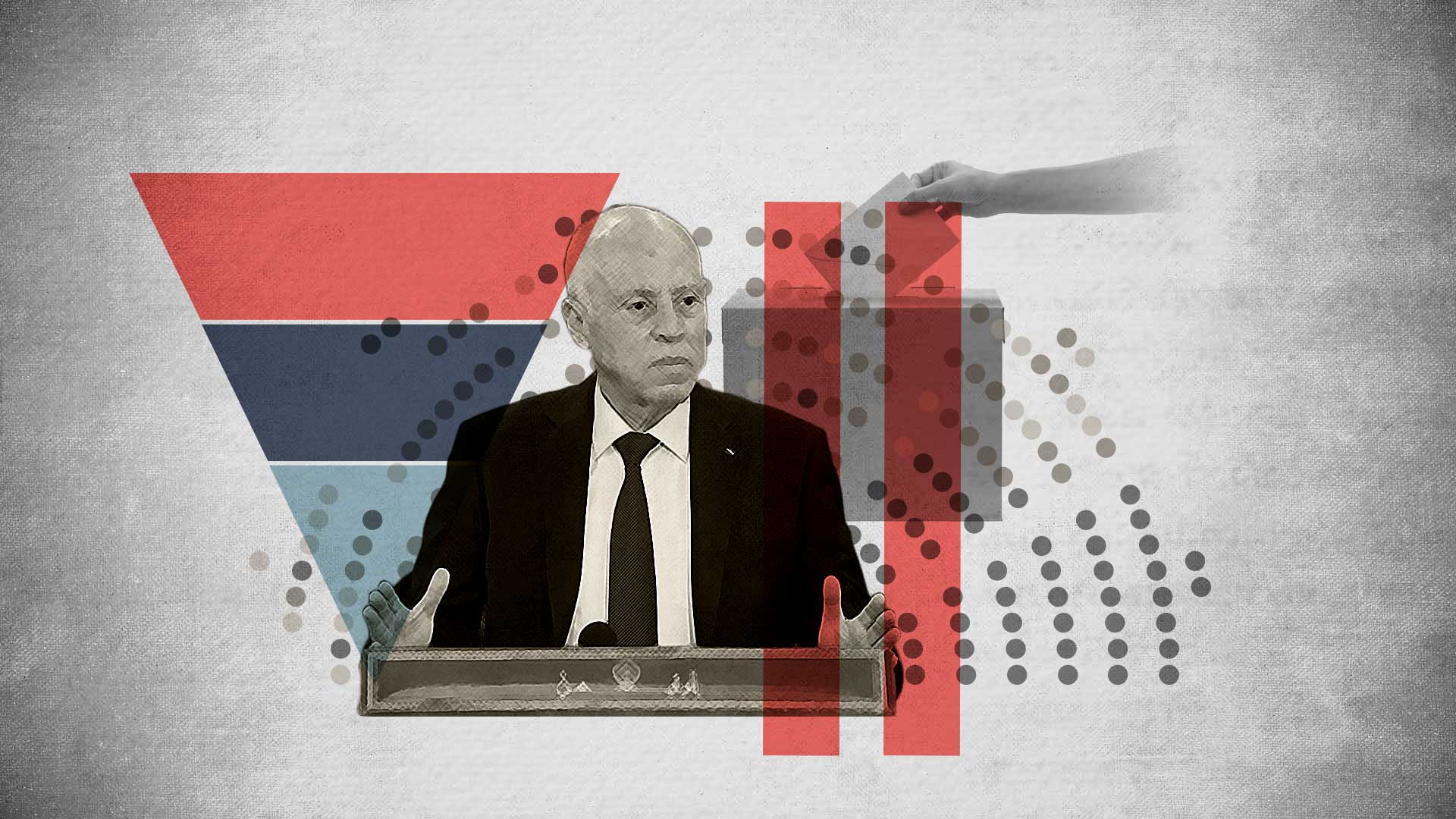In the spring of 2011, Kaïs Saïed expressed his vision for the state and the organisation of powers. He once again presented his plan in 2013 during the public debate on the drafting of the Constitution, in a text titled "for a new foundation". He then included it in his electoral campaign during his candidacy in 2019.
This vision is based on an alternative conception of how to exercise the democratic process, following a "new political thought" that he believes should be reflected in a "new constitutional text". This theory is based on the principles of direct democracy from the ground up, what he calls "bottom-up democracy building" or "the inverted pyramid".
At the highest level are the 264 local councils, corresponding to the number of delegations in Tunisia, whose members are directly elected by the inhabitants of each "imada" (the smallest sector). From this, regional councils are derived, corresponding to the 24 governorates, each containing one member representing each delegation within the governorate.
The Parliament, or "Assembly of the People’s Representatives", is at the bottom of the pyramid, and its members come from the local councils.
Based on the text "for a new foundation", and the declarations made by Kaïs Saïed during his electoral campaign, this interactive infographic attempts to summarise the different aspects of his plan.
1. Local Councils
Number of members in the councils
One elected representative per imada (sector)
One security officer
Representatives of potential local governments in the delegation (if applicable).
One regional representative of people with disabilities
Eligibility criteria and prerogatives of the various members
Elected members
- Are elected through two rounds of direct voting
- Candidacy cannot be accepted by the concerned body without sponsorship from the electorate
-
Conditions for sponsorship
- parity between women and men on the electoral list
- 50% of the electorate must be under 30 years old
- 25% of the electorate must be unemployed graduates
Security Officer Their role is to arbitrate the council
- Appointed by the central administration within the competent authority
- Sponsored by an absolute majority of the elected members of the council
Local government representatives No voting rights
Council prerogatives
To elaborate development projects within the delegation
Controlling authority/body
Control is exercised by the electorate through the imperative mandate, which allows them to revoke their vote at any time during the mandate
Grey Zone
- How can elected members be dismissed?
- Where do these councils get their funding from?
- Do these councils have to also implement development projects, or do they merely draft them?
- What about the current municipal structures?
2. Regional Councils
Number of council members
One representative from each local council in the governorate
Directors of regional administrations in the governorate
Eligibility criteria and prerogatives of individual members
Elected members enjoying decision-making and voting rights
The members of the local councils have one representative per delegation. Each one represents the council from which they originate for a fixed period of time, determined by the law. They are then replaced by a member of the same council through a random draw at the beginning of each term.
Local government directors No voting rights
One representative of people with disabilities
Council prerogatives
Dealing with the different projects developed at local level.
Controlling authority/body
The local committees rotate through a random draw each term.
Grey Zone
- What arbitration mechanisms will be put in place to prioritise local development projects?
- What is the framework for the advisory role of local administration directors?
3. The Assembly of the People's Representatives
Number of council members
264 representatives of local councils
(unspecified) Representative of Tunisians living abroad
Eligibility criteria and prerogatives of individual members
Representatives of local councils direct election of members
Representatives of Tunisians abroad open list vote
Council prerogatives
Legislative power
Controlling authority/body
Control is exercised by the electorate through the imperative mandate, which allows them to revoke their vote at any time during the mandate.
Grey Zone
- Who amongst the local councils or the Assembly has the legislative initiative, i.e. the power to draft legislation?
- How does the Assembly exercise control over the executive power held by the President of the Republic and the Government?
History is full of examples of diverse experiments with direct democracy based on the structure of councils and on direct participation in decision-making by individuals. However, Kaïs Saïed refuses to compare his version to the Soviet model or the Libyan popular councils. He instead sees it as "an expression of the true popular will through elections, with the possibility of withdrawing the allocated powers".
On the other hand, an analysis of the basis of this thinking, its methods and mechanisms, is difficult given the limited information available. Apart from the incomplete and imprecise document "for a new foundation" , published by Kaïs Saïed in 2013, there is no other written material on his state plan. Moreover, in Saïed’s media statements, his project is never presented in a comprehensive and clear manner. As a result, several scattered ideas had to be brought together in order to understand the basis of this inverted pyramid. This also raises other more essential questions, related to the absence of any real control over the President of the Republic or the capacity of such a system, which is limited to an organisational model, in order to respond to the economic and social demands raised by the revolution. Moreover, in the absence of a real large-scale social debate, the question of the admissibility of this plan by many Tunisian social categories remains.




